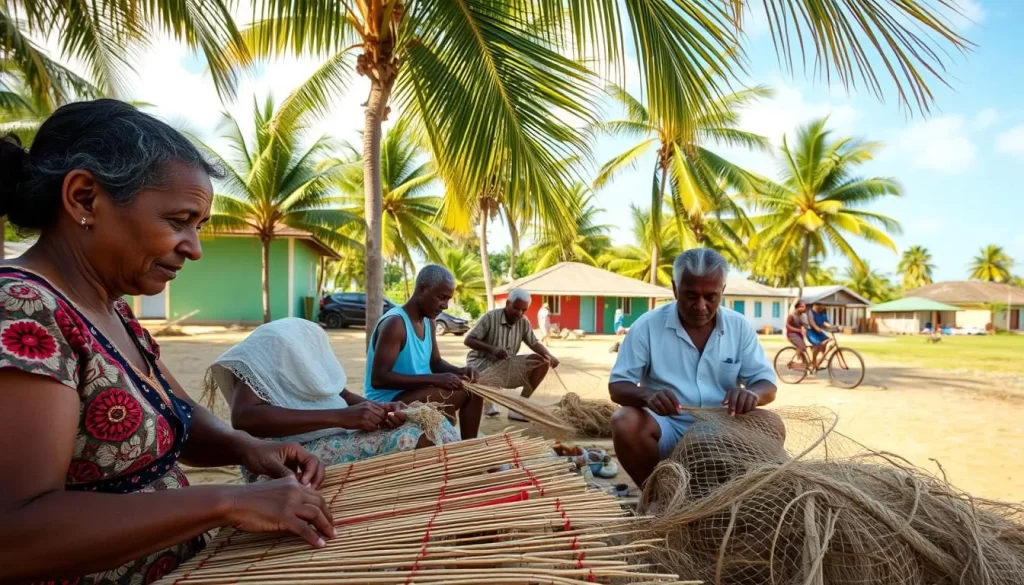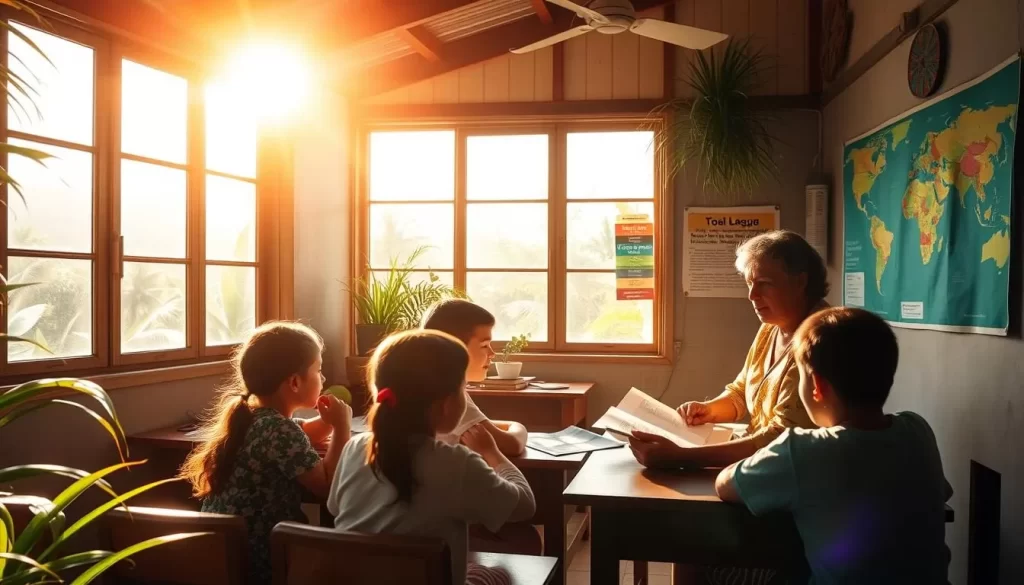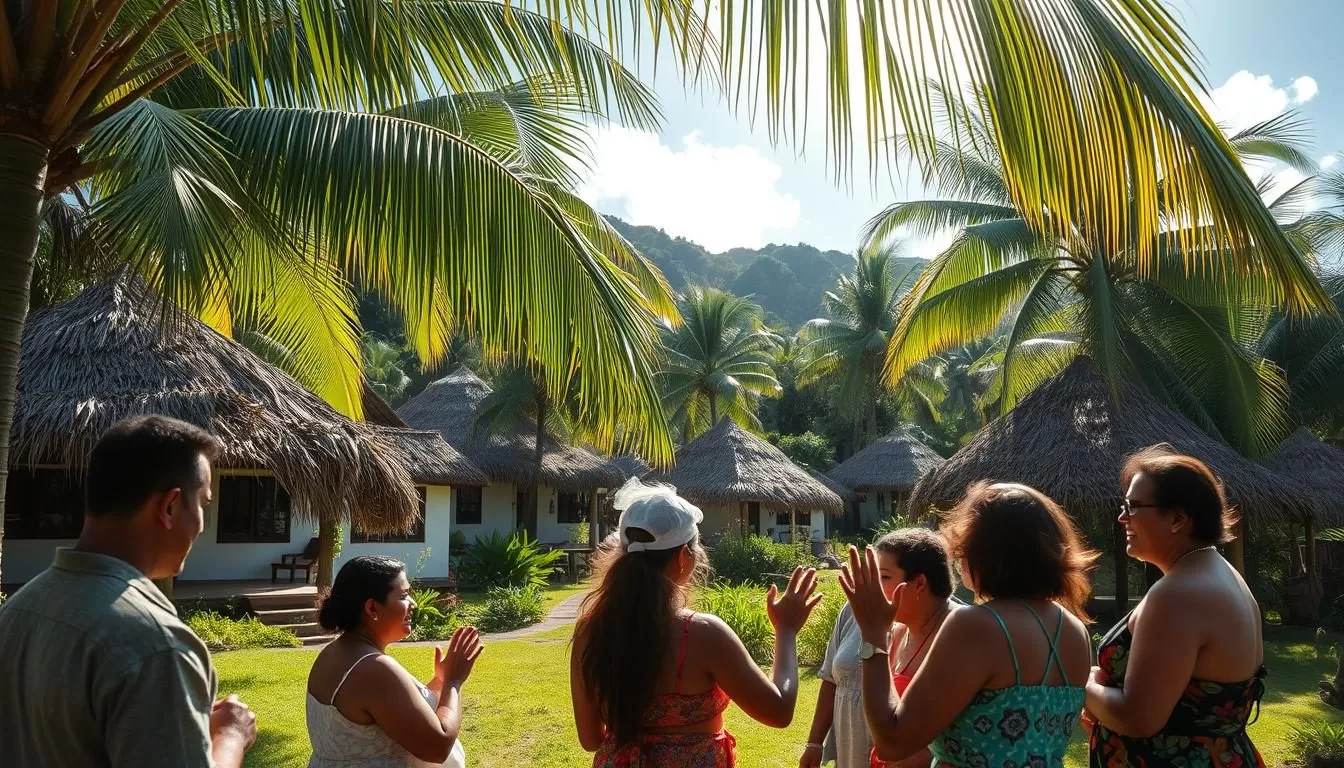Tokelau, a small island territory of New Zealand, boasts a fascinating linguistic landscape. Its co-official languages, Tokelauan and English, reflect its rich cultural heritage and modern connections. Tokelauan is spoken by approximately 4,260 people globally, with communities in Tokelau, New Zealand, and even Swains Island.
This language holds deep cultural significance, historically used in daily life and taught in schools since the 1940s. English, on the other hand, serves as a bridge for communication and governance. Together, these languages shape the identity of this unique territory.
Discover how Tokelauan and English coexist, their global reach, and their role in preserving the culture of this remote island community. This article will explore the historical, cultural, and linguistic dimensions that make Tokelau’s language profile truly special.
Introduction to Tokelau’s Linguistic Landscape
The three atolls of this territory are home to a vibrant linguistic culture. Its language reflects centuries of Polynesian traditions and external influences. Samoan missionaries played a key role in shaping its early linguistic roots, introducing new elements that blended with local dialects.

Historical and Cultural Context
Historically, chiefly clans and local governance have influenced how language is used. The community’s decisions have been crucial in preserving its linguistic heritage. In the 1940s, a shift from oral to written education marked a significant turning point.
Geographical Influences on Language
The isolation of the three atolls—Atafu, Nukunonu, and Fakaofo—has shaped its unique linguistic identity. Living in such a remote place has fostered a strong connection between language and daily life. The government and community have worked together to ensure its survival.
This territory’s language is not just a means of communication but a reflection of its rich cultural and geographical heritage. Its evolution continues to be shaped by the affair of living on small, isolated atolls.
Tokelau: Official and widely spoken languages
Daily life in this remote region is deeply intertwined with its native tongue. Tokelauan is more than just a means of communication—it’s a vital part of cultural identity. For many, it’s the language of home, family, and tradition.

The Role of Tokelauan in Daily Life
In the three atolls, Tokelauan is the primary language for personal and community interactions. About 88% of residents use it daily, making it the cornerstone of everyday life. From greetings to local expressions, it strengthens bonds within the community.
Families pass down Tokelauan through generations, ensuring its survival. Names and phrases carry deep meaning, connecting each member to their heritage. This language is a bridge between the past and the present.
Multilingualism Among Tokelauans
Many people here are multilingual, seamlessly switching between Tokelauan, English, and Samoan. This ability reflects historical influences and modern educational programs. Migration to New Zealand has also shaped this trend, with families often using multiple languages at home.
In American Samoa, Tokelauan speakers maintain their linguistic roots while adapting to new environments. This multilingualism fosters cultural preservation and global connections.
For the people of these atolls, language is more than words—it’s a way of life. It binds families, strengthens communities, and keeps traditions alive.
Linguistic Heritage and Polynesian Connections
The linguistic ties between Tokelauan, Samoan, and Tuvaluan reveal a shared Polynesian heritage. These languages are closely related, with mutual intelligibility that strengthens cultural bonds. This connection is rooted in centuries of shared history and traditions.
Shared Features with Samoan and Tuvaluan
You’ll notice many similarities in vocabulary and structure between these languages. For example, greetings like “Talofa” in Samoan and “Taloha” in Tokelauan show their shared roots. These similarities are not just linguistic but also cultural, reflecting a deep connection among Pacific island groups.
Tokelauan is classified under the Polynesian language family, which includes Samoan and Tuvaluan. This classification highlights their shared heritage and reinforces the cultural identity of the group. Traditional terms, such as those related to canoe building, further emphasize this bond.
- Shared vocabulary in greetings and common phrases.
- Mutual intelligibility between Tokelauan and Samoan.
- Traditional terms that connect seafaring traditions.
Academic reference and field research support these shared terms and group identities. For instance, the Polynesian Voyaging Society has documented how seafaring traditions influenced language development. These findings highlight the enduring legacy of Polynesian culture.
Living in the three atoll region, Tokelauans have preserved their linguistic heritage despite external influences. This preservation is a testament to the resilience of their culture and language. The connections between Tokelauan, Samoan, and Tuvaluan continue to thrive, bridging the past and the present.
Language Education, Documentation, and Revitalization
The journey of Tokelauan from oral tradition to documented language is a story of resilience. Over the years, efforts to preserve this language have included the development of dictionaries and educational programs. These initiatives highlight the dedication of the community and the support of the government in New Zealand and beyond.

Development of Tokelauan Dictionaries
Documenting Tokelauan began in 1846 with Horatio Hale’s rudimentary word list. This early effort laid the foundation for more comprehensive works. By 1975, the first official Tokelau-English Dictionary was published, followed by an updated version in 1986.
Each term in these dictionaries reflects the cultural richness of the three atoll region. The number of entries has grown significantly, showcasing the language’s evolution. These resources serve as a vital reference for learners and educators alike.
Modern Educational Initiatives
Education has been a cornerstone of Tokelauan revitalization. Since the 1940s, the language has been integrated into school curriculums. Today, programs aim to support children in learning Tokelauan while maintaining proficiency in English.
In New Zealand, initiatives like the Pacific Languages Strategy promote bilingual education. Research shows that at least 51% instruction time in a Pacific language is essential for effective learning. These programs ensure that Tokelauan remains a living language for future generations.
Community efforts, such as language nests and immersion units, play a crucial role. These programs foster intergenerational transmission, keeping the language alive in homes and schools. For more insights, explore this language revitalization project.
Phonology, Orthography, and Grammar Insights
Understanding the sound system of Tokelauan reveals its unique linguistic identity. This language uses a limited set of 15 Latin letters, with distinctive vowel length markers called macrons. These markers play a crucial role in pronunciation and meaning.

The type of phonological features in Tokelauan includes a small consonant set and five vowels. Vowel length is phonemic, meaning it can change the meaning of words. For example, “aha” (shell tool) and “ahaa” (cyclone) demonstrate this distinction.
Distinctive Vowel and Consonant Features
Tokelauan’s vowel system is marked by its simplicity and clarity. Each vowel can be short or long, indicated by macrons. This level of detail is essential for proper pronunciation and comprehension.
Consonants in Tokelauan are equally straightforward. Sounds like /h/ and /ɸ/ are treated interchangeably, reflecting dialectical variations. These differences highlight the dynamic nature of the language across regions.
Over time, the status of vowels and consonants has evolved. Research shows that vowel length has remained a consistent feature, while consonant usage has adapted to modern influences.
| Feature | Details |
|---|---|
| Vowels | 5 vowels with length distinctions |
| Consonants | 10 consonants, including /h/ and /ɸ/ |
| Orthography | 15 Latin letters with macrons |
The line of research in Tokelauan linguistics has greatly enhanced our understanding of its orthography. Studies have documented how dialectical variations influence sound production and grammatical structures.
For example, double consonants are frequent and mark agreement in verbs with plural subjects. This feature is a testament to the language’s complexity and richness.
To learn more about vowel length in Polynesian languages, explore this detailed analysis.
Conclusion
The language of this unique territory is a cornerstone of its cultural identity. Over the years, it has evolved while maintaining its deep roots in the three atoll region. The community has worked tirelessly to preserve its linguistic heritage, supported by the government and educational initiatives.
Connections with New Zealand and American Samoa have further enriched this vibrant culture. Families across these regions continue to pass down their native tongue, ensuring its survival for future generations. This bond strengthens both cultural and familial ties.
Efforts to document and revitalize the language have been crucial. From dictionaries to modern educational programs, these initiatives highlight its unique status and importance. Explore more about these efforts through the Tokelau Language Standards.
Every part of this linguistic heritage, from everyday expressions to academic studies, tells a story of resilience. Dive deeper into this rich tapestry and discover how it continues to shape the identity of its people. Share your own experiences and celebrate this vibrant culture.
The above is subject to change.
Check back often to TRAVEL.COM for the latest travel tips and deals.





